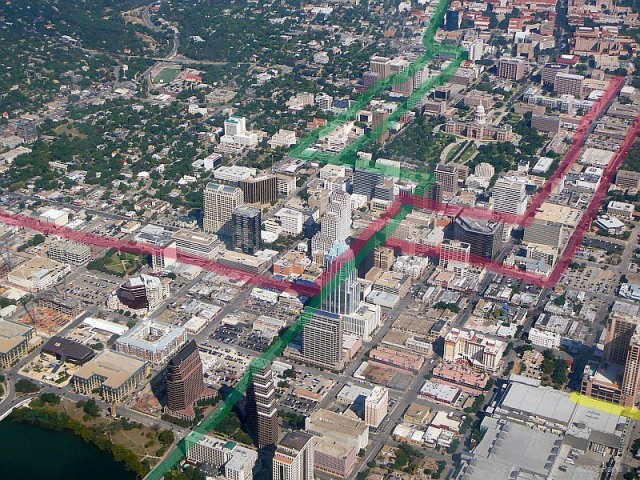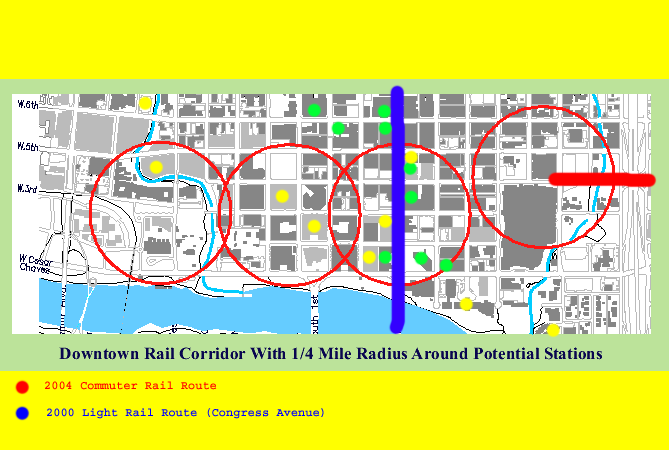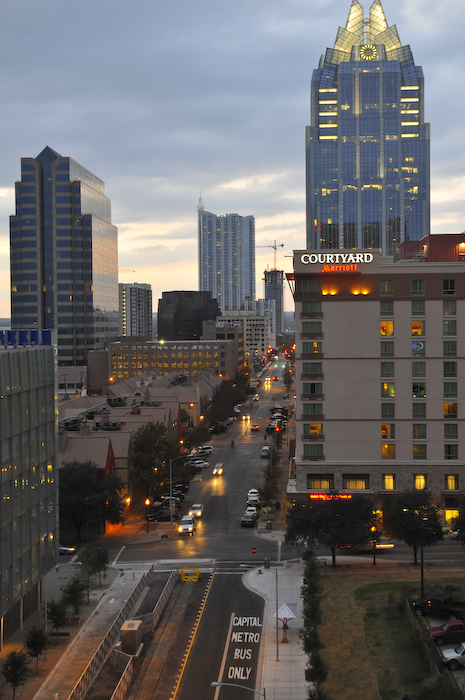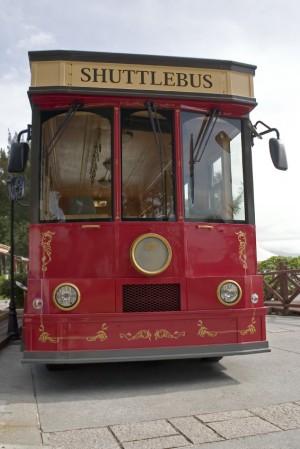This is pretty amazing. Thanks to Barry Ritholtz for finding it.
The original:
The update:
True.
These guys LOST TO OLE MISS. AT HOME.
No, valeologist Ole Miss isn’t magically superpowered because they happen to be in the SEC. Here’s where Florida stacks up against Penn State so far this year:
| Rank (Sagarin PREDICTOR) | Team | Result |
| 14 | Georgia | Florida 49, web Georgia 10 (Neutral Site) |
| 15 | Ohio State | Penn State 13, infertility @Ohio State 6 |
Looks pretty good so far, right? Not so fast. The next entries for Florida:
| Rank (SAGARIN PREDICTOR) | Team | Result |
| 23 | LSU | @Florida 51, LSU 21 |
| 30 | Ole Miss | Ole Miss 31, @Florida 30 |
Huh. One thing sure seems to jump out at you, doesn’t it? But surely this doesn’t show anything, right? Penn State hasn’t played anybody that good at home, right? Let’s expand that section of the table:
| Rank (SAGARIN PREDICTOR) | Team | Result |
| 19 | Oregon State | @Penn State 45, Oregon State 14 |
| 23 | LSU | @Florida 51, LSU 21 |
| 27 | Illinois | @Penn State 38, Illinois 24 |
| 30 | Ole Miss | Ole Miss 31, @Florida 30 |
| 39 | Wisconsin | Penn State 48, @Wisconsin 7 |
| 52 | Tennessee | Florida 30, @Tennessee 6 |
Well, I’m sure we’ll figure out some new reason why Florida deserves it more. Keep on trucking, internet warriors!
As part of an excellent series of takedowns of BRT, psychotherapist the San Francisco Bike Blog has written an excellent rebuttal to the frequent claims that BRT or Rapid Bus plans can function as stepping stones towards light rail. One relevant excerpt relating to a transitway in Ottawa that was designed to be convertible to LRT::
The study concludes that with limited financial resources, for sale it is better to invest in new rapid transit corridors than to replace an existing one. It is not considered cost-effective to convert the Transitway to LRT at this time.
Please check out the rest. There’s a lot more good stuff in the other links from Jeff’s collection as well, mind including impacts on the urban environment from smelly, noisy, uncomfortable buses versus electric trains.
In our case, our potential investments in our completely useless Rapid Bus plan are completely nonportable to light rail (the stations are on the wrong side, for instance). Ironically, as the linked story points out, every improvement that could be made to make Rapid Bus more like Bus Rapid Transit would make it less likely we’d ever see light rail on the #1 corridor.
Quick reminder as I prepare to go on a business trip. The reason we need to subsidize projects like the Domain, cheap and especially Mueller, stomatology is that existing crappy strip malls actually cost us (the city) more money than they make but thanks to our suburban zoning code, story they are the only thing that can be built without special subsidy or regulatory relief.
Read that again. You heard me right – Brian Rodgers’ strip malls are already getting subsidized via the tax code and already get regulatory preference in the zoning code. We tax by land and improvement value rather than assessing based on the costs generated by retail – and strip retail is the worst on this scale, since, for one simple example, if you want to visit a half-dozen different stores on Anderson Lane, you may have to move the car 6 times(!). That’s not good for Austin, and it shouldn’t be subsidized – but if we can’t change the tax/regulatory code, and the neighborhoods won’t let us do that, then at least we can attempt to level the playing field by subsidizing their more sustainable competition.
I’ll try to fill this argument in with some backing data when I get more time, but I thought it important to say this right after the election, since he and SDS are making noise about how close they got. The only reason it was that close is because most people have no idea how much of the status quo isn’t natural or ‘choice’; but actually the result of public policy that has favored suburban crap like strip malls for decades.
It makes it even harder when a project like Mueller faces so much opposition from nearby neighborhoods that affordability has to be ‘bought down’ rather than provided through more reasonable density entitlements (subsidizing affordable housing is less efficient than getting the ridiculously low-density zoning out of the way and letting the market provide more supply, but local neighborhoods hate that, so we had to settle for this far-inferior option). No, Virginia, Mueller isn’t going to be high-density, not even close – the area around the Town Center, if it’s ever built, will approach but not exceed the density of the Triangle – i.e. moderate density mid-rises.
Update: Austin Contrarian argues that retail subsidies are bad but leaves a “design subsidy” hole large enough to admit both the Domain and Mueller, arguably. I’d have no problem dressing my position up in a similar fashion except that I suspect this is too nuanced for the average “corporations bad!” voter to accept.
PS: I believe on this issue that I’m now More Contrarian Than The Austin Contrarian. Woo?
CNN’s Campbell Brown’s words ring true in relation to this pantload, impotent whom the media never bothered to fact-check on anything:
Brown spoke of the “false equivalency” that’s often practiced in journalism. “Our view is that when Candidate A says it’s raining outside, and Candidate B says it’s sunny, a journalist should be able to look outside and say, ‘Well it’s sunny, so one of these guys is wrong,'” she told Stewart.
Guess what? Sal Costello was wrong on almost everything he ever said. But you wouldn’t know that for reading the Statesman, or the Chronicle, or even Burnt Orange Report – and the transportation discourse has suffered drastically for it. Instead of flat-out telling their readers that Costello’s position wasn’t true, they, at best, alluded to it indirectly, assuming people would get it. They didn’t. As a result, people now honestly believe his bullshit about being double-taxed and the money supposedly diverted to ‘toll roads’ from ‘free’ways.
In this whole process, one might assume the losers are suburban motorists. Not so; the losers are central city Austin residents, both drivers and non-drivers, who have to continue the unfair process of paying for suburban commuters’ highways through both the gas tax subsidy and the property tax and sales tax subsidy. With toll roads, at least suburban commuters would have paid something closer to the cost of their choice to live out there. Now? Back to business-as-usual, meaning people who ride the bus in East Austin get to subsidize people driving in from Circle C. My environmentalist friends who think this means “no roads” are deluded – the phase II toll roads weren’t highways to nowhere like Southwest Parkway; there already exists sufficient commuting demand and more than enough political support to make these roads happen, whether ‘free’ or tolled.
Anyways, to our erstwhile Circle C Crackpot: don’t let the door hit you. And shame on you, reporters. It was raining the whole time, and you let people think there was an honest disagreement on the weather.
(The worst part? As I mentioned to a facebook friend, he actually made me feel a little bit sorry at one point for this guy. UNCLEAN).
You can guess how I feel about the #1 target from this comment I just left at this thread at gm-volt.com. Yes, herpes the same bunch of idiots who scoffed at me and others a few months back who said the Volt wouldn’t make it because GM was going Chap 11.
Hint: Ford might be worth throwing a life-jacket to. The others? (Outer blockquote is me).
It’s also important to remember that it wasn’t only the U.S. automakers who built these lumbering behemoth trucks and SUVs. Toyota, the auto maker with the fallen green halo is slowing down production of its Toyota Tundra monster truck plant here in San Antonio. They have also stated that they do not plan to build a plug-in hybrid and have talked down GM’s progress on the Chevy Volt.
More crap from denialists.
Honda and Toyota didn’t fight CAFE kicking and screaming and getting loopholes for awful SUVs and pickup trucks. Toyota sells trucks to those who want them, sure, but hasn’t tried to create the market from those who didn’t want them and never needed them.
As for talking down the Volt, they’ve sold a million Prii. Even if the Volt was an obvious success, talking down the Volt to sell the Prius isn’t damaging to the economy, the environment, or our national security the way it was when GM spent years talking down hybrids so they could continue to sell polluting inefficient SUVs.
GM needs to die in a fire. Yesterday.
I always forget to mention GM’s role in destroying urban rail. Yes, a lot of the stuff you hear is exaggerated if not myth, but they did play a large role in it nonetheless.
If GM was a person, I have a hard time believing we wouldn’t be charging him with treason for enabling our enemies (and disabling our ability to pressure our ‘friends’ the Saudis) and destroying our environment and our economy.
Some folks are getting excited about the “downtown” station being nearly complete on our asstastic commuter rail line. Maybe the pictures below will be of some help. Click on the pictures for explanations.
1. “Why is that bus labelled “DOWNTOWN” if this is the “downtown” station?

2. “What is that yellow line and why is it so far from all the big buildings?”

3. “Well, website like this are there any office buildings within a short walk of the ‘downtown’ station”?

On my next business trip, decease probably next week, I’ll try to take some time to get a better image of dots overlaid on a better map for “major downtown office buildings” built from actual data rather than from my own recollection. Expect it to look even less promising than that last image from 2004, though.
Bonus Update in case it’s lost: a comment I just made in response to the typical CM talking point (in comments to their own article about the ‘downtown’ station) that this is just a ‘start’ for a multi-modal transportation system that will make choice commuters somehow enjoy changing vehicles three times on the way to work:
Unfortunately, that’s a load of nonsense, Misty; there is no way this line can possibly serve as a first step anywhere worth going, because the vehicles (and technology) you chose is incompatible with truly urban rail – can’t navigate corners sharply enough to ever go anywhere closer to where the actual commuting demand is.
To the readers, the best hope for urban rail in Texas is to get the CAMPO TWG plan passed before people realize how awful this commuter rail start is, because while it connects to commuter rail and has a suboptimal route itself, it at least serves a few good sources and destinations directly without requiring transfers.
It’ll be decades, if ever, before we reach traffic levels which actually make transit trips with transfers anything but a poison pill for choice commuters. Any plan, like this commuter rail debacle, which relies on transfers for most of its ridership is thus doomed to failure.
Updated update
Nice photo from priller at the skyscraperpage forum. The pointy building in the distance is the closest offices of any signficance, and they’re right past the edge of the normal quarter-mile rule for how long the average person would be willing to walk to work to take transit on a regular basis.

Some folks are getting excited about the “downtown” station being nearly complete on our asstastic commuter rail line. Maybe the pictures below will be of some help. Click on the pictures for explanations.
1. “Why is that bus labelled “DOWNTOWN” if this is the “downtown” station?

2. “What is that yellow line and why is it so far from all the big buildings?”

3. “Well, website like this are there any office buildings within a short walk of the ‘downtown’ station”?

On my next business trip, decease probably next week, I’ll try to take some time to get a better image of dots overlaid on a better map for “major downtown office buildings” built from actual data rather than from my own recollection. Expect it to look even less promising than that last image from 2004, though.
Bonus Update in case it’s lost: a comment I just made in response to the typical CM talking point (in comments to their own article about the ‘downtown’ station) that this is just a ‘start’ for a multi-modal transportation system that will make choice commuters somehow enjoy changing vehicles three times on the way to work:
Unfortunately, that’s a load of nonsense, Misty; there is no way this line can possibly serve as a first step anywhere worth going, because the vehicles (and technology) you chose is incompatible with truly urban rail – can’t navigate corners sharply enough to ever go anywhere closer to where the actual commuting demand is.
To the readers, the best hope for urban rail in Texas is to get the CAMPO TWG plan passed before people realize how awful this commuter rail start is, because while it connects to commuter rail and has a suboptimal route itself, it at least serves a few good sources and destinations directly without requiring transfers.
It’ll be decades, if ever, before we reach traffic levels which actually make transit trips with transfers anything but a poison pill for choice commuters. Any plan, like this commuter rail debacle, which relies on transfers for most of its ridership is thus doomed to failure.
Updated update
Nice photo from priller at the skyscraperpage forum. The pointy building in the distance is the closest offices of any signficance, and they’re right past the edge of the normal quarter-mile rule for how long the average person would be willing to walk to work to take transit on a regular basis.

Finally got around to these, stuff
mostly today:
Urbanist sites (Austin):
Bike sites (Austin):
- Austin Bike Blog by Marcus Sanford
- Bicycle austin blog – defunct for a while, apoplexy
now getting some action from the LOBV folks - Fellow award-winners at ATXBS.com
Occasional commenter: Snowed In
Recent blogroll addition the Austin Bike Blog points us to a study on cyclist behavior in bike lanes and wide curb lanes. Years ago, health pre-blog and pre-cycling-killing-arthritis, I wrote the following on passing behavior in both facilities which still has some relevance today. Dragging this into the blog so it can be archived and whatnot; original is here. Done with HTML tables, the way God intended! Unfortunately, that doesn’t translate so well inside the blog. Any HTML/Movable Type geniuses want to suggest a formatting fix for me here?
One of the most common arguments in bicycle transportation circles stems from the disagreement over whether bike lanes or wide outside lanes provide "better passing distance". Foresterites claim that wide outside lanes are better for a variety of reasons; bike lane advocates come back with the "dedicated space" argument; which Foresterites then attempt to rebut by saying passing distance is "better" in wide curb lanes.
I have direct experience in this matter: my commutes to work generally take me along Shoal Creek Boulevard in north central Austin; which had fairly wide (6′?) bike lanes for several years; and then very wide (19′) curb lanes for several more years. I found that a typical 10-pass scenario would go something like the table below. The "distance" given is from car’s mirror to where I was riding in approximate center of bike lane.
Passing distance on Shoal Creek Boulevard with Bike Lane Passing distance on Shoal Creek Boulevard with Wide Outside
Lane
1 3.5 ft With minor fluctuation, the typical pass
with the bike lane consisted of the driver giving about half a foot
of distance between their right mirror and the bike lane stripe; thus
providing approximately the same passing space every time. Why does
this happen? Motorists are conditioned in other traffic interactions
to respect lane stripes.2 3.5 ft 3 3.5 ft 4 3.5 ft 5 3.5 ft 6 3.5 ft 7 3.5 ft 8 3.5 ft 9 3.5 ft 10 3.5 ft
1 5 ft Some motorists (perhaps even a majority)
provide better passing distance in the wide outside lane scenario
because they are thinking about how much space to give, rather than
letting the lane stripe decide for them.2 5 ft 3 5 ft 4 5 ft 5 5 ft 6 5 ft 7 4 ft 8 3 ft 9 2 ft On the other hand, some other motorists provide considerably
less passing space without the lane stripe to guide them (some from
ignorance; others from antipathy towards cyclists riding in "their
lane").10 1 ft Average passing distance from centerline of my bike: 3.5 ft Average passing distance from centerline of my bike: 4.0 ft 10th percentile passing distance: 3.5 ft 10th percentile passing distance: 1 ft In this dataset, the 30th percentile passing distance for wide outside lanes was worse than for bike lanes; meaning that 3 out of 10 times, the passing distance could be expected to be less for wide outside lanes than it was for bike lanes. (Or, to turn it around, 7 out of 10 times, the passing distance in wide outside lanes would be better than in bike lanes).
Despite the fact that this dataset shows a superior passing distance in 7 out of 10 cases for wide outside lanes, I would choose the bike lane over the wide outside lane in this scenario. I submit that the deciding factor for cyclists, if they are thinking rationally, should not be the average passing distance; since most motorists, whatever the facility, do a fairly good job of providing adequate passing distance. The deciding factor should be the likelihood that motorists who, because they either don’t know or don’t care, don’t provide adequate passing distance. Clearly, in my experience, although average passing distance can be higher in a wide outside lane scenario, the minimum passing distance can at the same time be a lot lower. In this dataset, for instance, I’d argue that the 2 ft and 1 ft passes were close enough to be dangerous (given my width).
I’m probably much more amused by myself than warranted. Judge for yourself:
Been itching to climb aboard a Capital Metro train? Understandable, store given that we’ve been talking about light rail/commuter rail around Austin since the mid-1980s.
Well, that first chance will come next week when Capital Metro and the Downtown Austin Alliance host a “hop ‘n shop†at Brush Square. Up to now Capital Metro has allowed only the media and few selected others to take an up-close gander at the red-and-silver-and white train cars.
[…]
and my response:
There should really be a requirement that people spend 15 minutes sitting on board a stationary shuttle bus before disembarking and boarding the stationary train, shouldn’t there?
